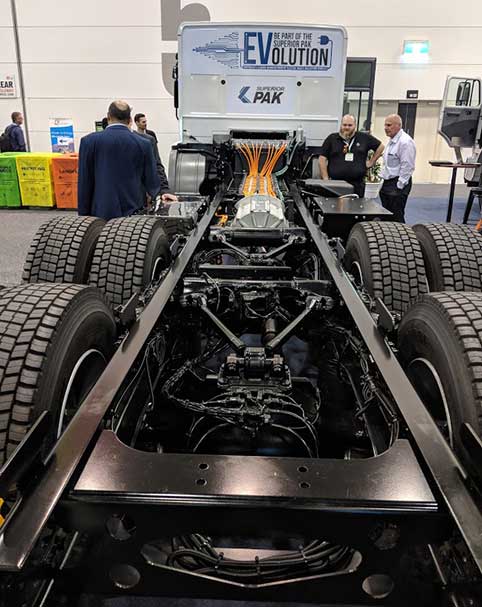Battery prices are plunging and that could drive an electric car industry in Australia
Tech
The cost of lithium batteries could drop up to 95 per cent in the next decade, leading to a dramatic expansion in opportunities related to electric cars, says the boss of one of Australia’s newest electric vehicle companies.
Right now batteries are among the most expensive components in electric cars. That’s been a major drag on sales — and has limited the market for batteries and related materials.
But that’s about to change says Tony Fairweather, managing director of Melbourne electric vehicle (EV) retrofitter SEA Electric.
SEA Electric retrofits commercial trucks and vans to electric power.
Smaller, cheaper and more energy-dense batteries mean Mr Fairweather’s business can retrofit an increasing variety of vehicles.
The energy density of batteries has improved by a third in the last year — and that’s a key reason why new EV businesses like SEA are taking off says Mr Fairweather.
“This is going to turn the commercial vehicle manufacturing space on its head,” he said at this week’s All Energy conference in Melbourne.
“[Manufacturers] are actively scrambling to find a position in the EV space.”

SEA is one type of EV company that a new government committee focusing on the technology reckons might be Australia’s way into the sector, as the country plays catch-up in the battery race.
South Australia Senator Tim Storer, who chairs the committee, says he’s hoping to have a report by December that can guide Australia’s transition to EVs and support the industries behind that.
There’s no consideration of a return to large-scale car manufacturing in Australia — but there are opportunities throughout the EV supply chain, he says.
That includes niche products like Precision Buses’ electric buses in South Australia, Queensland fast-charger maker Tritium, battery factories like Magnis Resources (ASX:MNS) which wants to build a Queensland plant, and even WA’s proposed ‘Lithium Valley’ which will develop Australia’s raw materials into batteries.
Already the latter process is happening: Lithium Australia and Lepidico are trying to produce battery grade lithium from mine waste.
Another example is Olivers Food (ASX:OLI) – a roadside retailer that is building Tesla EV chargers in its car parks.
EVs are bigger in Australia than you think
While most EV-related activity in the ASX-listed sector is limited to upstream exploration for battery commodities, a lot is happening elsewhere to advance the Australian market.
Fast charger network installers like Everty, EV products seller GelCo, and EV bus seller Carbridge as well as backers like the NRMA are all working to ensure that Australia is prepared for EVs as battery prices fall and cheaper EV models arrive.
Mr Fairweather says there are three areas of opportunity for EVs: passenger vehicles, high-end cars, and commercial vehicles.
Commercial is where the fastest uptake is — as businesses begin to convert their fleets to electric, he says.

One of the biggest factors in EV prices — and therefore uptake — is public policy.
The federal government will consider how to manage a fall in excise tax on petrol and what to replace it with, how to best support EV purchases, and how to manage the fact that by 2040 11 per cent of Australia’s total energy consumption is expected to be from EVs, says Senator Storer.
EV prices should start to come down significantly — in part because of policy efforts — from 2020, he believes.
Can Australia become a battery producer?
While countries like China, Japan, the US and South Korea have already stolen a march on battery development and production, an impending battery shortage means new gigafactories are still needed.
There are some 45 gigfactories around the world – plants that make lithium ion batteries – driving demand for lithium, nickel and graphite.
Australia has potential to “move up the value chain” to start refining lithium for global markets, according to the Australian Office of the Chief Economist’s September Quarterly Report.
“More than $3 billion is committed to the development of facilities that will supply lithium hydroxide to the electric vehicle market, and the number of full-time workers on lithium projects in Western Australia has increased from 399 in December 2014 to more than 2600, with thousands more to come,” the report said.
“Australia’s prospects for entry into this market are mixed. Australia would likely need to be strongly established at all previous stages of the supply chain in order to position itself for battery.”
A new port in Kwinana, the fact that Australia has all 35 minerals used in lithium batteries, and research in West Australia into cathodes are advantageous, but it needs to be back by government policy supporting the whole supply chain.